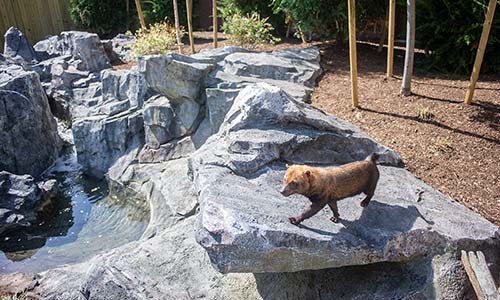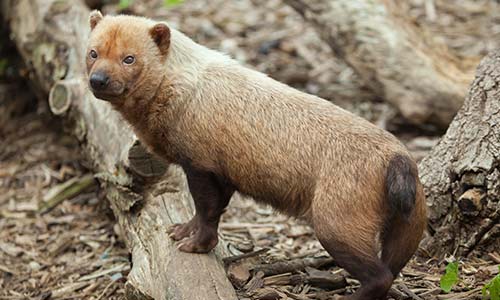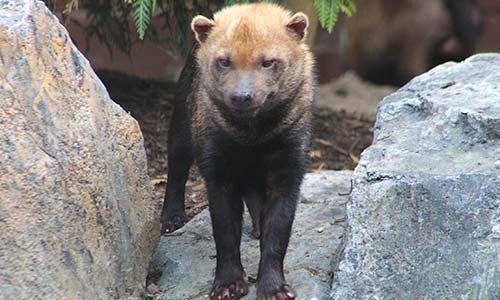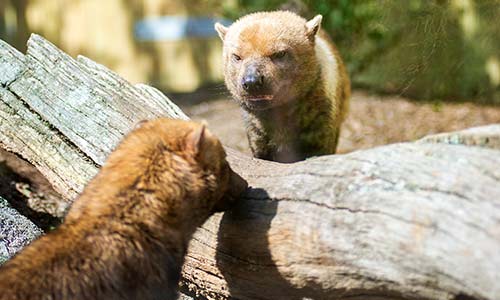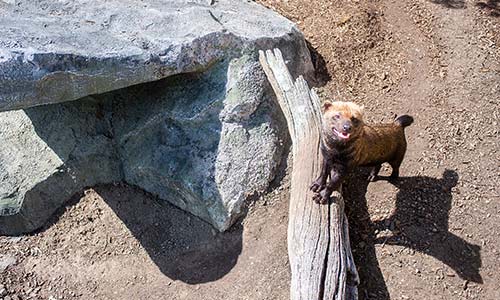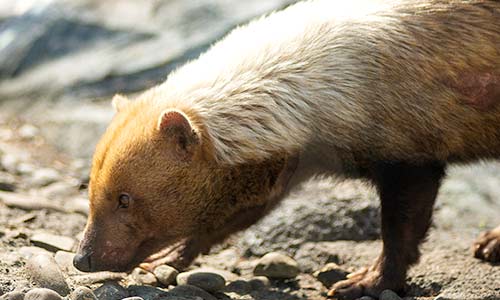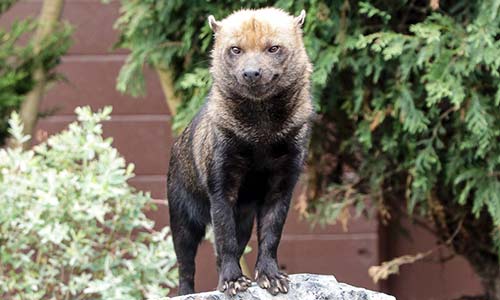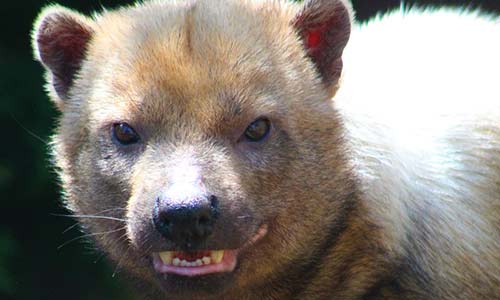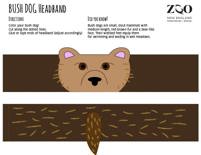Bush Dog
Speothos venaticus
About the Bush Dog
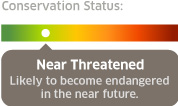
Geographic Range:
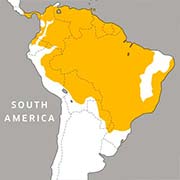
Class: Mammalia
Order: Carnivora
Family: Canidae
Genus: Speothos
Species: venaticus
Listed as a near threatened species by IUCN, these small mammals can be found in extreme eastern Central America and northern South America, south to Paraguay and northeastern Argentina. Formidable hunters, their size and shape make them uniquely adapted for life on the forest floor, while their webbed feet make them strong swimmers. These elusive hunters are rarely glimpsed, even in their native habitat. In fact, they were thought to be extinct when first discovered through fossils.
Bush Dog Facts
Appearance:
Bush dogs are small, stout canids with medium-length, red-brown fur and a bear-like face. Their webbed feet equip them for swimming and wading in wet meadows. They're low to the ground (7-12 inches high), with short legs and a short bushy tail. Bush dogs' reddish tan fur extends from their head and turns dark brown to black towards their backside and tail. They have a light patch of fur under the throat. Bush dogs have webbed feet and can dive under water.
Size:
Adults are 22-29 inches long (57-75 cm) and weigh 11-15 lbs. (5-8 kg.). They are low to the ground (7-12 inches, 20-30 cm high).
Diet:
In the wild, bush dogs are carnivorous pack hunters that prey on large rodents such as agoutis, pacas, and the occasional capybara. When hunting individually, bush dogs will eat small rodents, snakes and ground-dwelling birds.
Behavior:
Bush dogs are diurnal (active during the day) and live in social groups of up to 12 animals, with a dominant breeding pair in each pack. While only the alpha female produces the offspring, non-breeding members of the group will guard and care for pups. Males bring food to the female in the den.
Bush dogs use scent and urine to mark their territories. Males will raise a back leg (similar to a domestic dog), while females reverse up to trees and urinate on the trunk from a handstand position. This scent has been compared to that of vinegar, earning this species the nickname “vinegar dog.”
These dogs are extremely vocal communicators, an adaptation for living in a habitat with low visibility. Bush dogs are apex predators with no natural predators.
Reproduction:
Females reach sexual maturity at 304 days (approximately 10 months), and males at 365 days (one year). Only the alpha female in a pack of bush dogs will mate. After a gestation period of about 65-70 days, a female will have a litter of one to six pups (four on average). Females will have one litter per year. Pups typically weigh 130-190 grams and will nurse for eight to 20 weeks.
Habitat/range:
Neotropical; Northern and central South America into Panama, south to southern Brazil, Paraguay and north-eastern Argentina, and west to Bolivia, Peru and Ecuador. Found in forests and wet savannahs, always close to water. Bush dogs den in underground burrows or hollow tree trunks.
Median Life Expectancy:
Unknown in the wild
Threats:
Bush dogs are listed as Near Threatened primarily due to habit loss from agriculture. Diseases, attacks from domestic dogs, and illegal poaching are occasional threats.
Fun Fact:
- Bush dogs are so rare in their habitat that they were thought to be extinct when first discovered through fossils.
- The bush dog is the only living species in the genus Speothos, and genetic evidence suggests that its closest living relative is the maned wolf of central South America.
You Can Find This Animal in the Caribbean Coast
Vinegar Dogs
Bush dogs use scent to mark their territories. Their particular scent is similar to that of vinegar, earning this fragrant species the nickname, vinegar dog!
You May Also Like
At Franklin Park Zoo:
At Stone Zoo:




